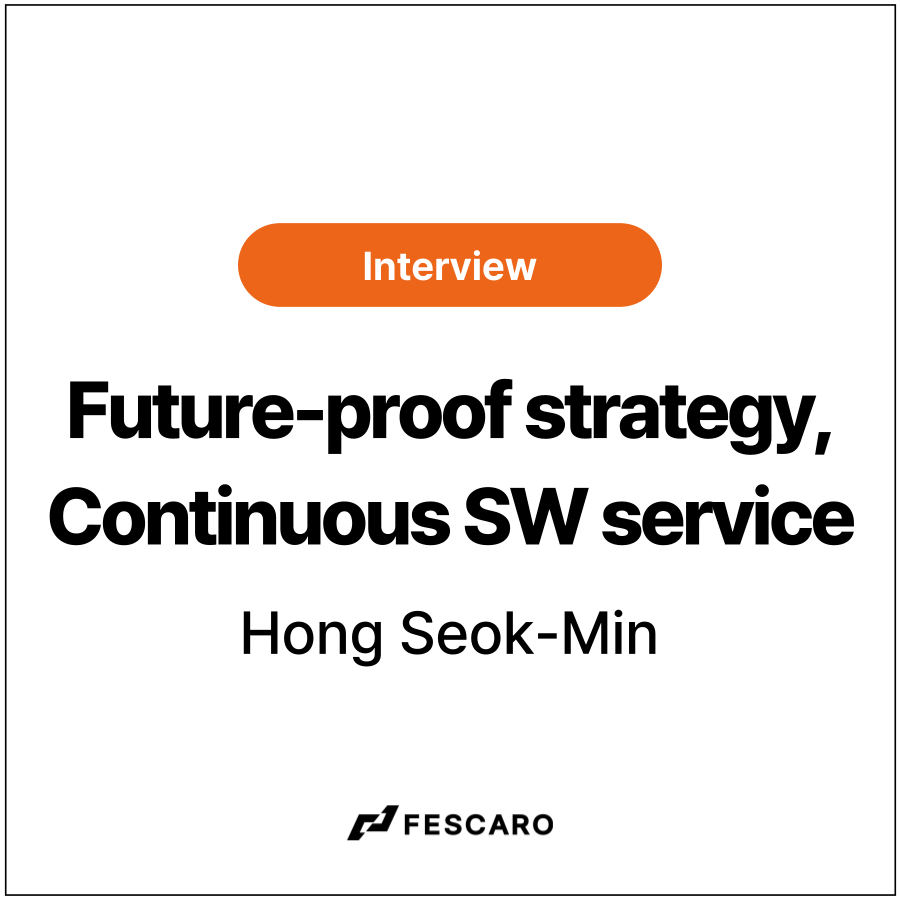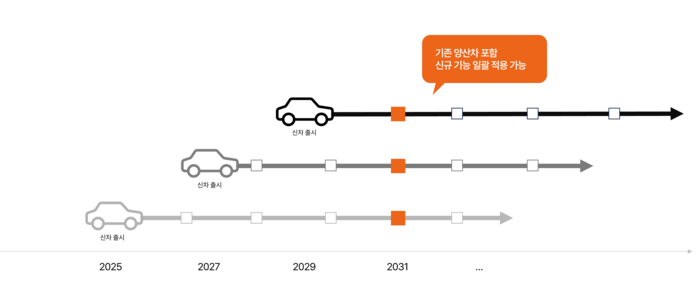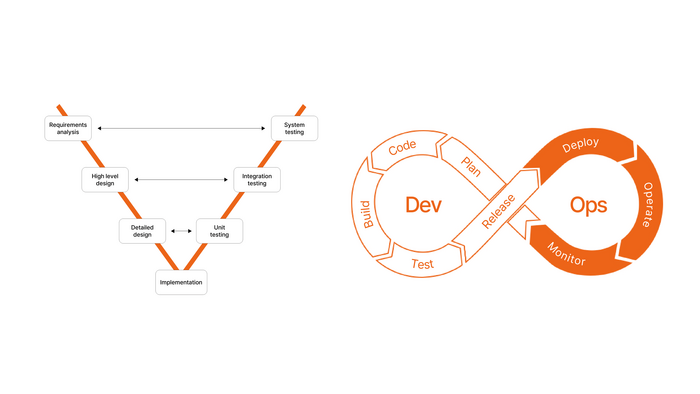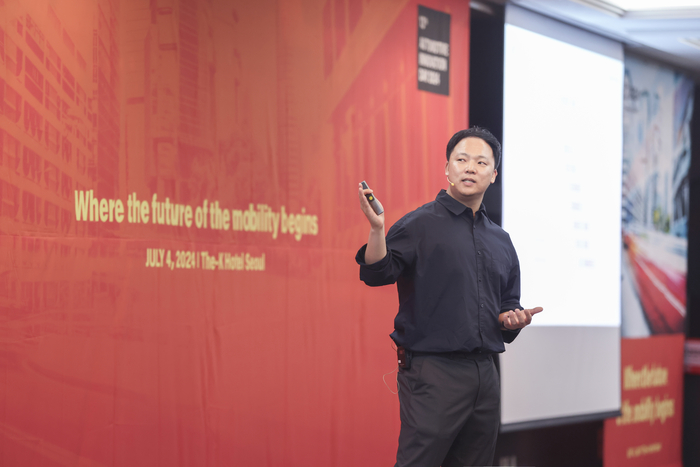
Decoupling and a shift in industry awareness are essential to the realization of Software-Defined Vehicle (SDV)Enhancing work efficiency through the use of Software-Defined Operation (SDO)
![]()
Hong Seok-Min, CEO of FESCARO
We are witnessing a mobility revolution,
with self-driving vehicles on the roads and seamless connectivity between
smartphones and vehicles. The future remains unpredictable as technology
rapidly advances. At 'AID 2024' (Automotive Innovation Day 2024), the largest
conference on cutting-edge automotive technology in Korea, one speaker captured
attention with the introduction of the Software-Defined Operation (SDO)
concept. He emphasized that 'in the mobility era, work processes must also
become software-centric.'
That speaker was Hong Seok-min, CEO of FESCARO,
a company specializing in future mobility software solutions. I had the
opportunity to meet CEO Hong to discuss his insights on the evolving automotive
industry.
What is the most notable keyword in the
mobility industry right now?
The most prominent keyword is undoubtedly 'SDV (Software-Defined Vehicle).'
Traditional internal combustion engine vehicles were hardware-centric, making
it challenging to modify functions after release. However, with SDVs, key
vehicle functions are controlled by software, allowing for performance
improvements through updates. Tesla is the leading example of this
transformation. By providing software updates, Tesla offers consumers enhanced
value consistently, demonstrating that a subscription model is feasible for
vehicles as well.

Source=FESCARO
When purchasing a vehicle, consumers
typically consider factors like design, brand, and price. However, Tesla has
demonstrated that the true demand lies in having a vehicle that remains
up-to-date over time. The SDV concept addresses this consumer need while also
offering automakers a new profit model.
To realize the SDV, software development
methods are also evolving. The traditional V-model, which completes software
development by the mass production stage, faces limitations in improving
quality after mass production. To address this issue, a new methodology called
DevOps is gaining traction. DevOps integrates development and operations,
creating a continuous cycle from design to monitoring. This approach allows for
ongoing product improvements, enabling automakers to continuously enhance
competitiveness even after mass production.

Source=FESCARO
How should industry awareness change to
realize SDV?
In an evolving mobility landscape, it is crucial to first grasp the essence of
this shift. The focus should be on enhancing the user experience through
continuous service evolution, even after mass production. I believe the true
value of SDV can be fully realized when the following three key elements are
combined.
First, the focus should be on
problem-solving rather than technology itself. The strength of SDV lies in
automakers' ability to implement the latest features faster, more
cost-effectively, and at scale across mass-produced vehicles. SDV encompasses
various technologies, such as centralized architecture and vehicle operating
systems (OS). Depending on the situation, some or all of these technologies may
be utilized. However, what matters more than the technology is the 'problem'
that the technology is designed to solve.
Second, decoupling is necessary between
automakers and controller developers, or between automakers and third parties.
Decoupling is about minimizing the impact when certain system components are
modified by reducing interdependence. By increasing the independence of system
components, software flexibility and scalability can be enhanced.
Lastly, the true value of software must be
fully recognized. It should be seen as more than just a one-time development
service but rather as a valuable product in its own right. The real competitiveness
of future mobility software lies in continuous 'maintenance,' not just in the
initial development phase. Therefore, a more effective strategy is to focus on
improving quality through ongoing development and maintenance after release,
rather than heavily investing in development costs before release.

Source=AEM
What is the core of competition in the
mobility era?
The core of competition is to continuously maximize the 'value that consumers
recognize and are willing to pay for.' In the future, 'software,' which holds
the key to this value, will determine the fundamental competitiveness of
vehicles. To achieve true service innovation, product development methods must
also shift to a software-centered approach.
FESCARO has defined this software-centric
operational management solution as 'SDO (Software-Defined Operation).' Its key
feature is the ability to centralize and manage complex, interwoven tasks
across the vehicle life cycle and the entire automotive industry value chain in
a single platform. This allows for easy and efficient tracking and analysis of
the organic impacts caused by software changes through a computerized system.
With SDO solution, automakers can streamline existing complex processes and
focus more on enhancing vehicle quality.
Please give us a real-world example of
how SDO improved productivity.
I would like to introduce a case involving an automaker and an electric vehicle
charger manufacturer.
To sell vehicles in Europe, compliance with
automotive cybersecurity (UN R155) and software update (UN R156) regulations is
mandatory. In practice, many automakers face reduced work efficiency as they
handle regulatory compliance work separately from vehicle development work. To
address this, FESCARO has developed an integrated operational management system
that minimizes work duplication, and it has already been implemented by a
global automaker.
The core function of the system is
real-time monitoring of the vehicle's cybersecurity status. When a software
defect or security event occurs during the vehicle's operation, it can be
quickly identified and addressed. Furthermore, the system allows for re-entering
the vehicle development stage to update the software, enabling the reproduction
of the vehicle with enhanced performance.
In addition, by systematically managing
information on the vehicle's software versions and history, the system allows
for proactive identification and response to potential impacts on
interconnected systems during software updates. This enables efficient
management of complex derivative and follow-up projects, optimizing operational
resources while continuously enhancing cybersecurity.
FESCARO has also applied the SDO concept to
electric vehicle chargers, where rapid identification and response to
abnormalities are critical. Issues like overheating or battery malfunctions can
lead to fires, making prompt action essential for safety.
In addition, we have developed an
integrated operational management system for Software-Defined Charger (SDC)
that enables remote management of multiple chargers distributed over long
distances. This solution, already adopted by global charger manufacturers,
allows for proactive issue resolution and damage minimization by monitoring the
real-time status of charger models and components. Furthermore, it ensures
keeping service quality at its best through OTA (Over-the-Air) updates,
enabling effective response to maintenance issues on electric vehicle chargers.
SDO shows its true value when applied to complex, interconnected tasks such as cybersecurity and software updates. By creating a system optimized to the specific environment and needs of the customer, SDO can improve work efficiency, streamline management, increase convenience, reduce costs, and shorten development cycles. Moreover, it provides a strong foundation for SDV competitiveness and serves as a proven strategy for enhancing quality post-mass production.
<Source: etnews(Ensuring the Competitiveness of Future Mobility Through Continuous Software-Based Services)>